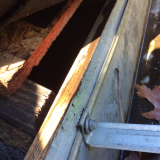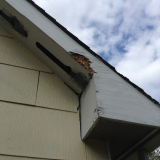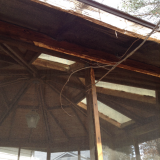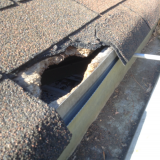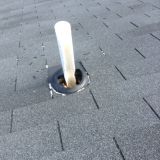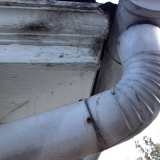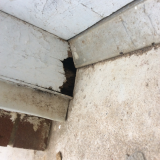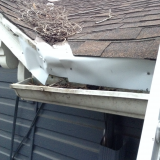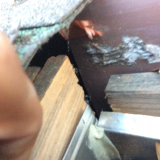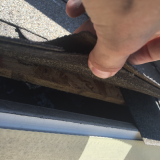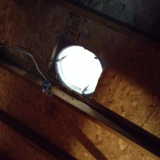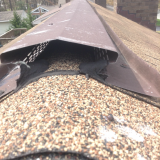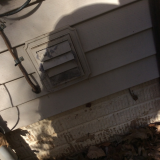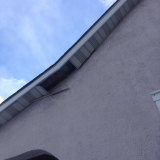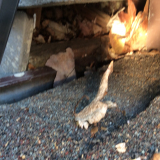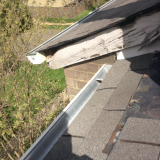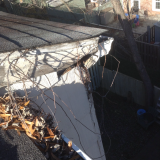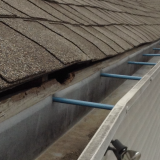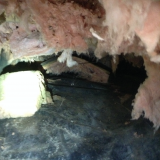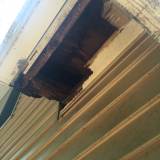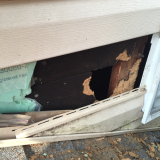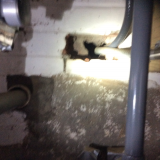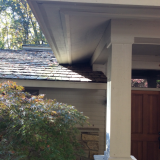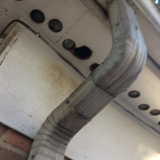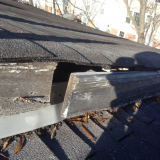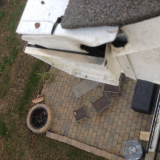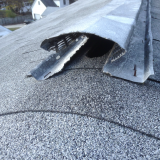Error message
Notice: Undefined property: stdClass::$comment_count in comment_node_page_additions() (line 728 of /var/www/animalcontrolsolutions.com/public/modules/comment/comment.module).Grey Squirrels and Flying Squirrels are the most common animals that enter the attics of homes all over North America. Squirrels are closely related to rats and share many similar behaviors. If you think you need squirrel removal, don't wait! Squirrel damage is serious to homes and attics.
Squirrel Damage
Squirrels are vicious chewers and can cause serious damage to a home. Thousands of house fires are caused every year by squirrels gnawing on electrical wires. Squirrels also contaminate the insulation of many houses with their droppings, urine, fur, and parasites.
Depending on the damage, sometimes it is necessary for a wildlife removal specialist to apply disinfectants and treat parasites after squirrel removal. Occasionally, we encounter seriously contaminated attics that need our insulation team to remove and re-install new insulation.
Most wildlife removal companies stay busy all year with squirrel removal and control, squirrel exclusion and proofing; and squirrel damage repair. We remove these nuisance rodents all year in modern homes, historical homes, schools, churches, and commercial office buildings.
Determining if you Have a Squirrel Problem
Do you have a squirrel in your home? The majority of homeowners call wildlife removal companies because they hear an animal making scratching noises in the attic or wall voids. Grey squirrels or flying squirrels could be the critters you are hearing scuffling through your home.
There are also many other nuisance wildlife animals and rodents that enter the attics of homes and businesses such as rats, bats, raccoons, mice, and birds. A wildlife removal technician will do a thorough inspection of your attic and exterior of your home to determine exactly what is causing the problem and what needs to be done to solve the issue. Squirrel In Attics is a common problem for homeowners.
Squirrel Removal and Exclusion
Squirrel trapping and relocating is only the beginning of the work needed to solve a problem with those nuisance rodents in your attic. Performing a squirrel exclusion or “squirrel proofing” your home is the only permanent solution to keeping squirrels out of your house and attic.
A home that had squirrels removed without an exclusion runs the risk of new squirrel inhabitation, and possibly other rodents such as rats and mice entering and causing problems in the future. A handyman, common pest control companies, and “squirrel exterminators” do not require the expert knowledge or proper equipment to complete the job right. Squirrels are nuisance wildlife, not pests, and legally require non-toxic removal methods such as exclusion and trapping.
Squirrel exclusion is a job that should only be handled by professionals. Professional Wildlife holds all the necessary trapping licenses and permits to make sure that the job is done in full compliance with all state and federal laws. Professional Wildlife leads the industry in state-of-the-art technology such as excluder devices, thermal imaging, and digital inspection cameras.
Squirrel Biology
The Grey Squirrel, Sciurus carolinensis. is the most seen wild mammal in an urban setting as they are able to take advantage of any available environment including parks, gardens, woodlands, and homes. Grey squirrels commonly seek out shelter and the viable breeding security of household attics and wall voids. Grey squirrels are one of the most common animals that homeowners encounter.
The Southern Flying Squirrel, Glaucomys volans, is a nocturnal species of squirrel commonly found in the southeast. The flying squirrel is not capable of powered flight like birds or bats; instead, they glide between trees. They are capable of obtaining lift within the course of these flights.
The direction and speed of a Flying squirrel in midair is varied by changing the positions of its two arms and legs, largely controlled by small cartilaginous wrist bones. Like the common grey squirrel, flying squirrels also seek out attics and wall voids for shelter and viable breeding security.

